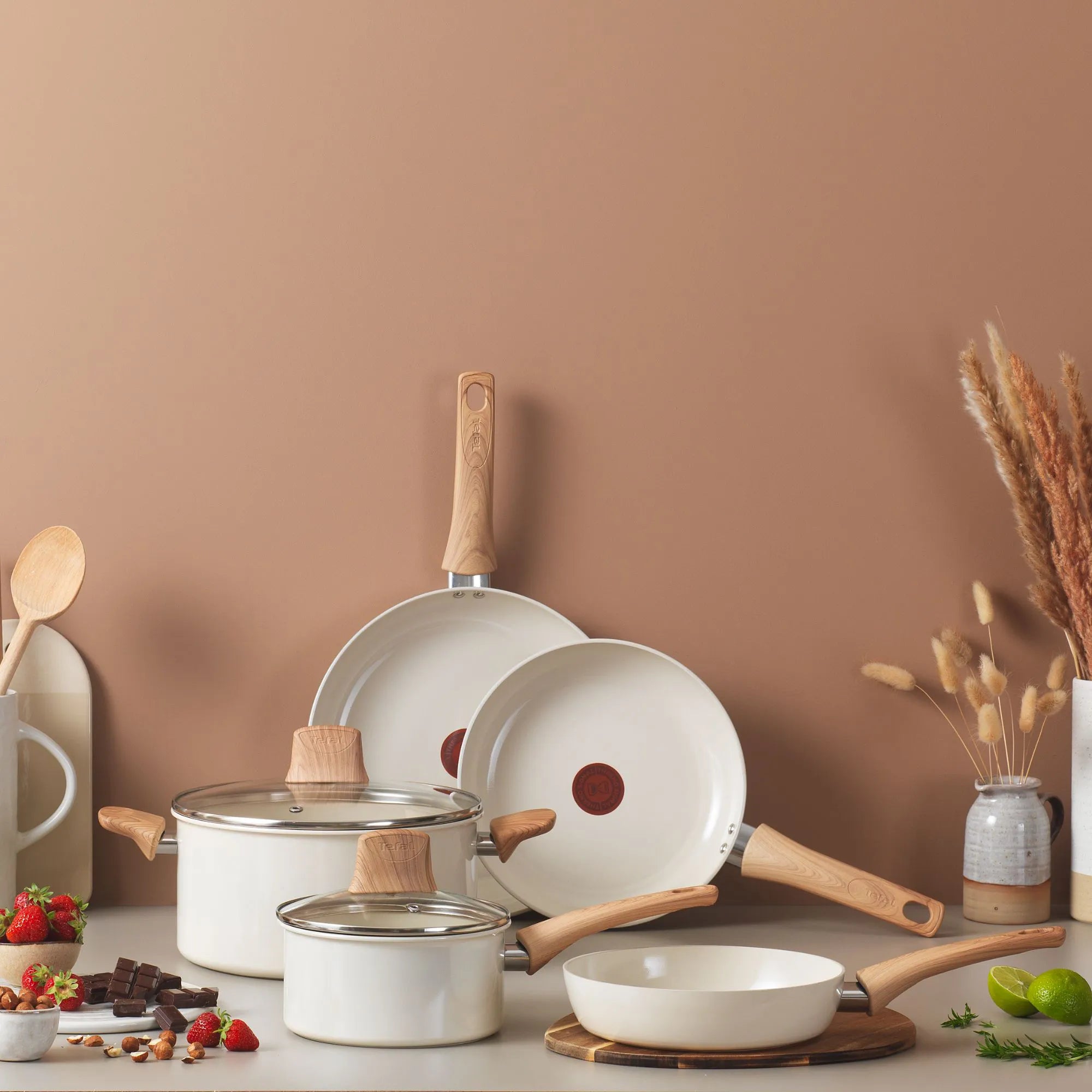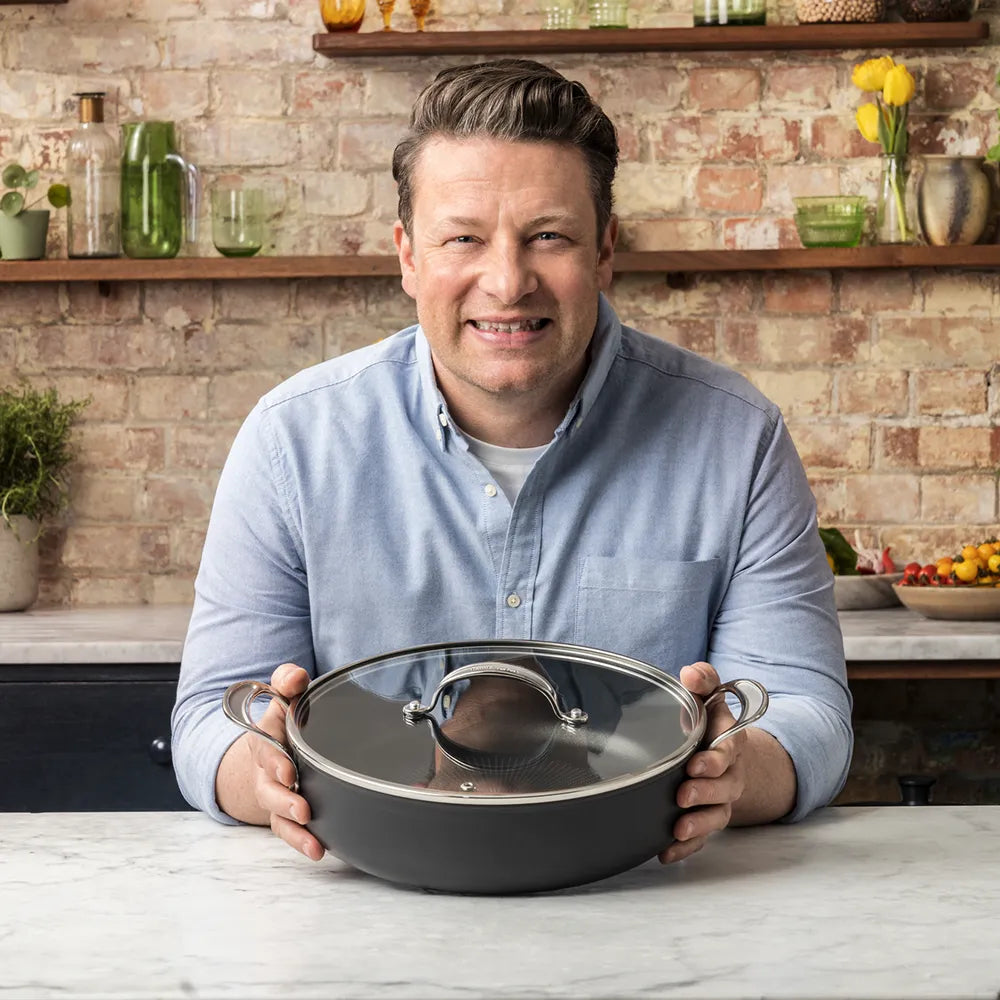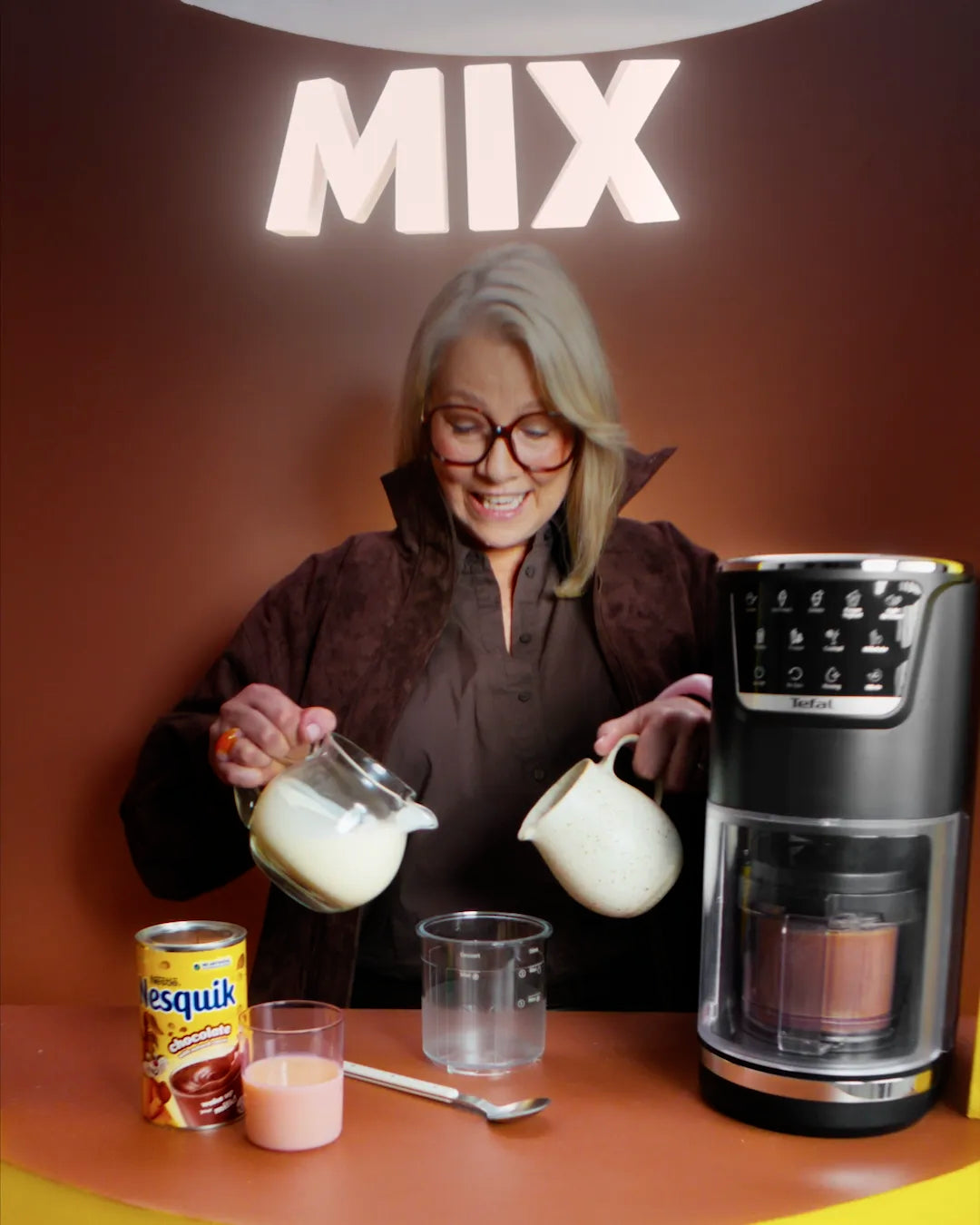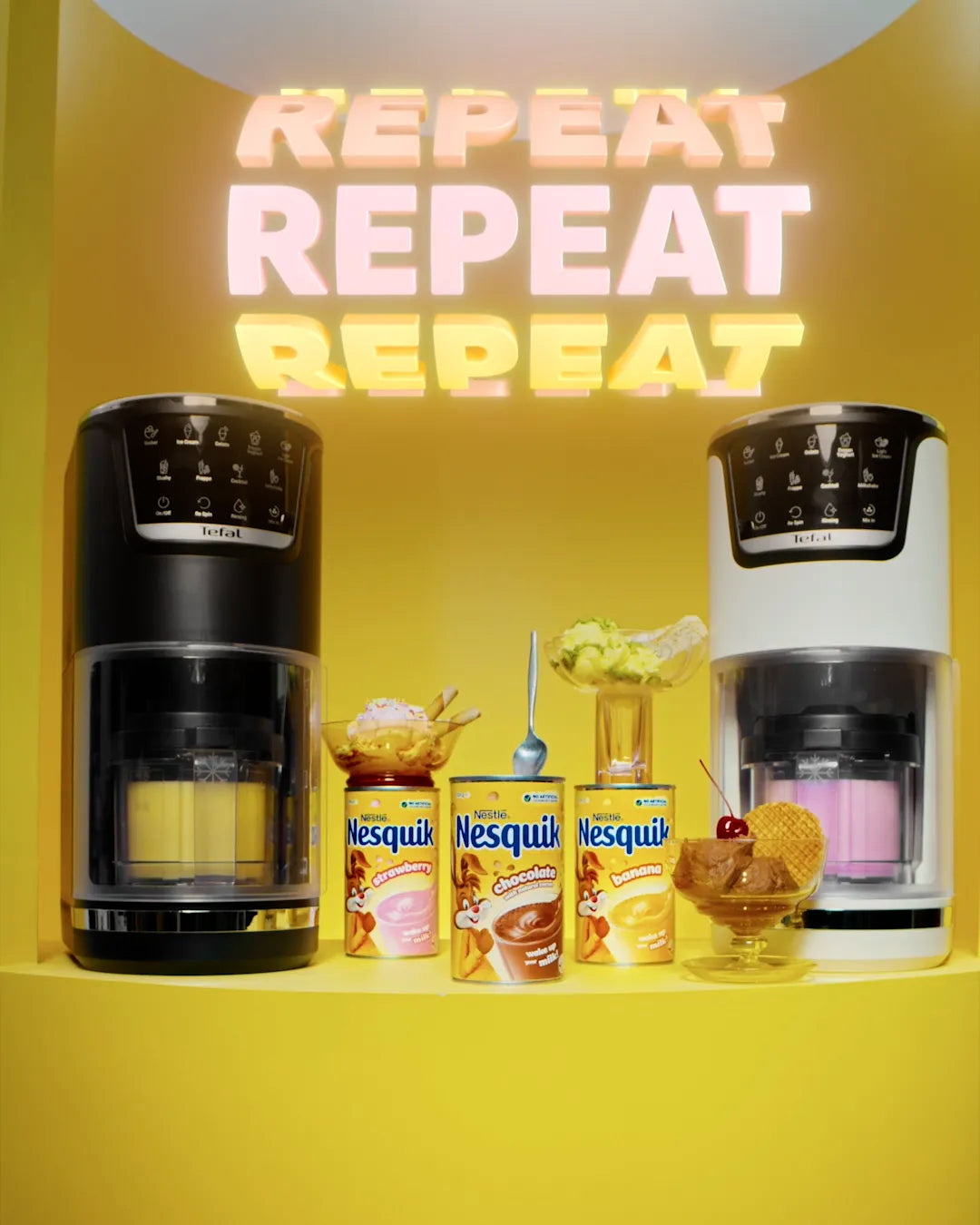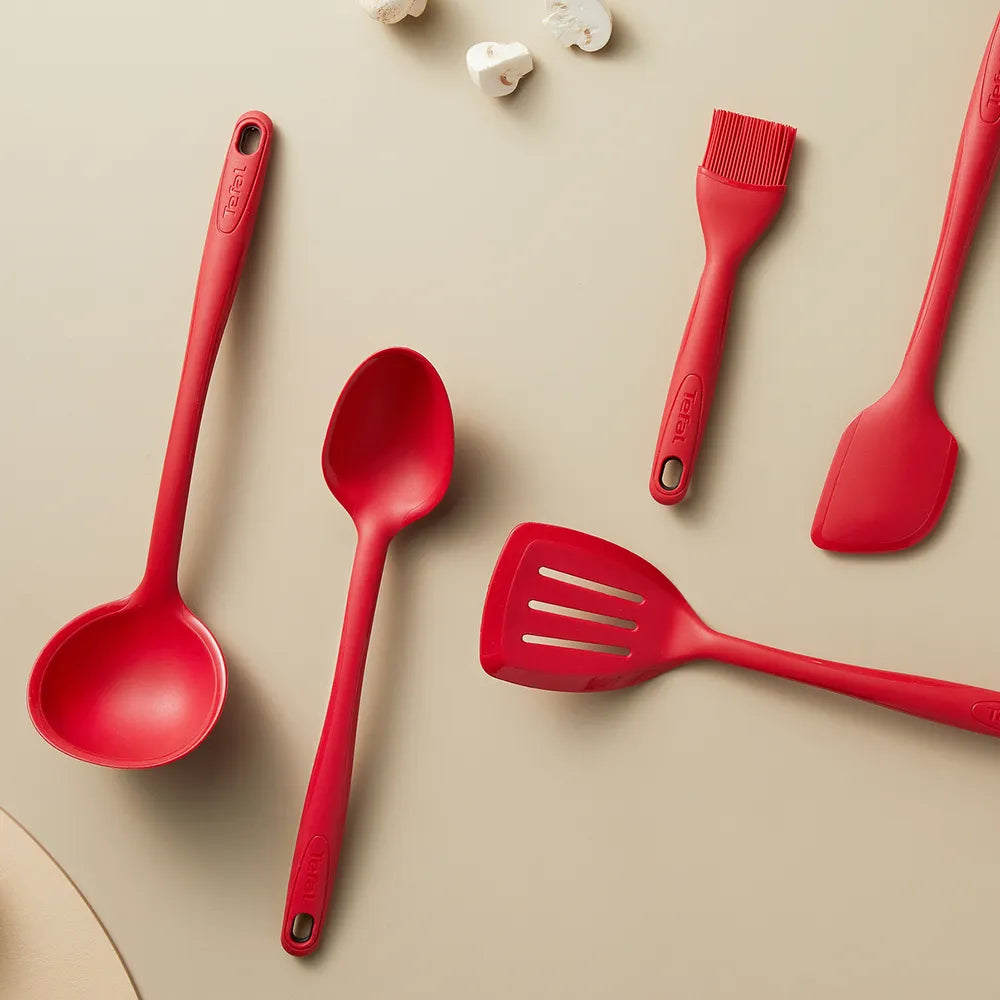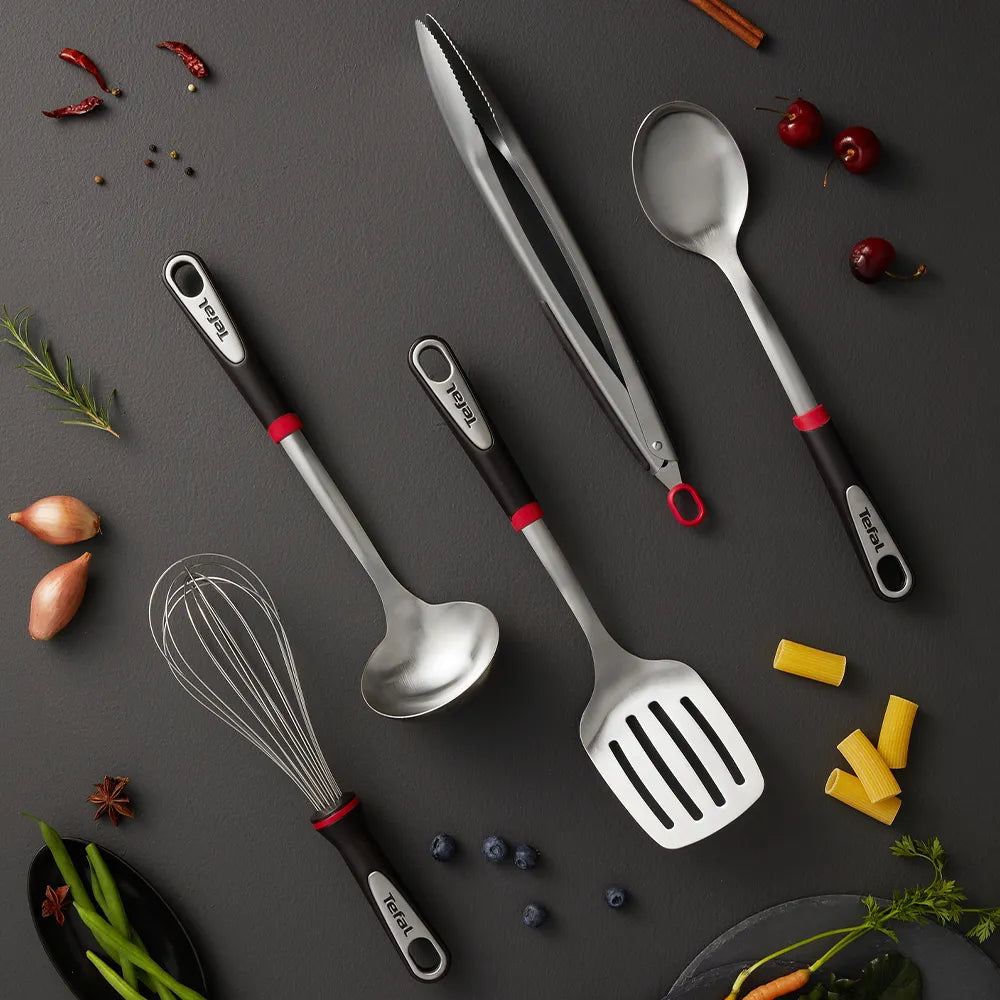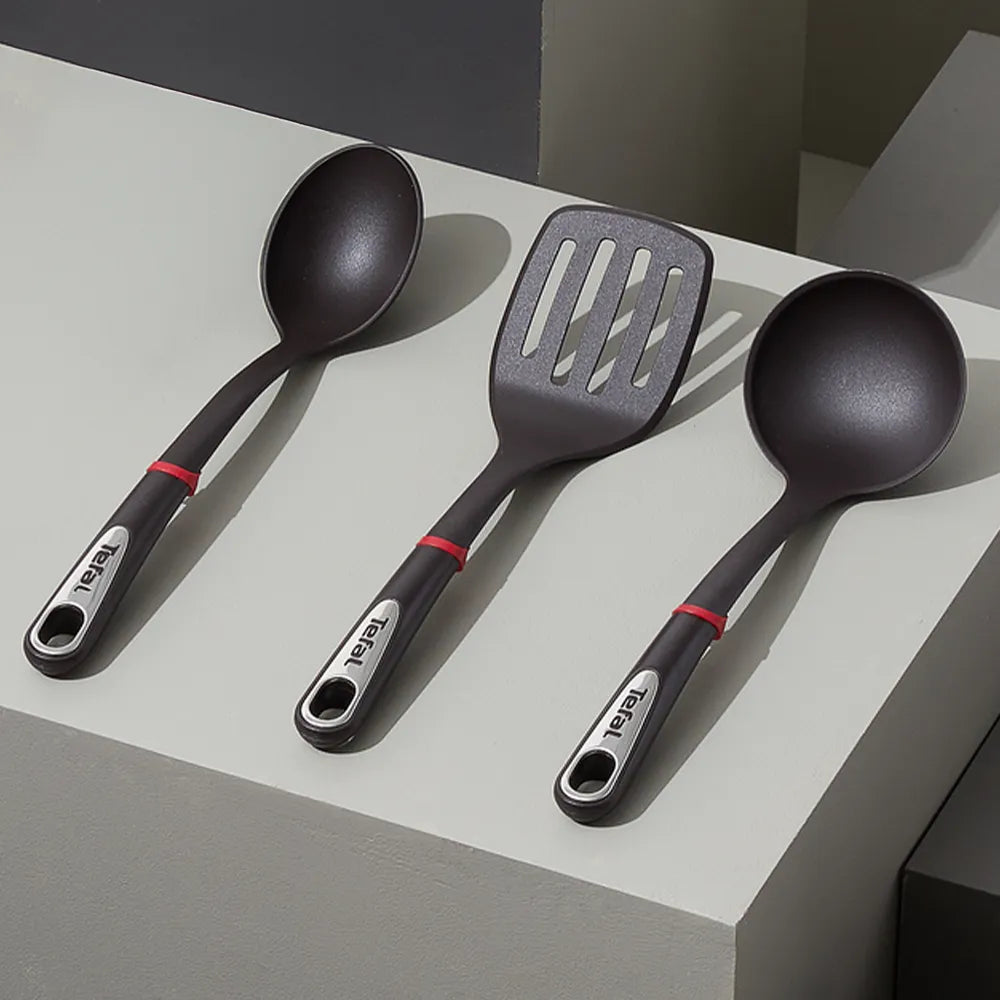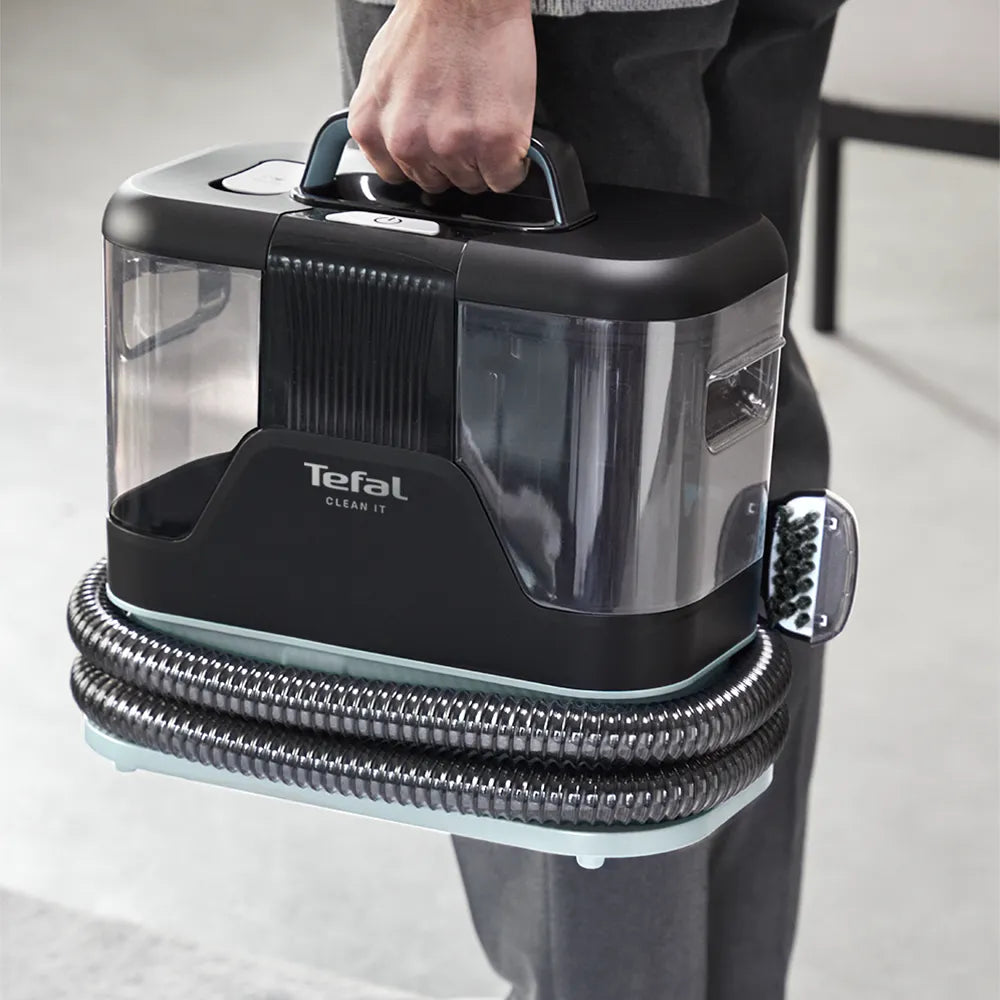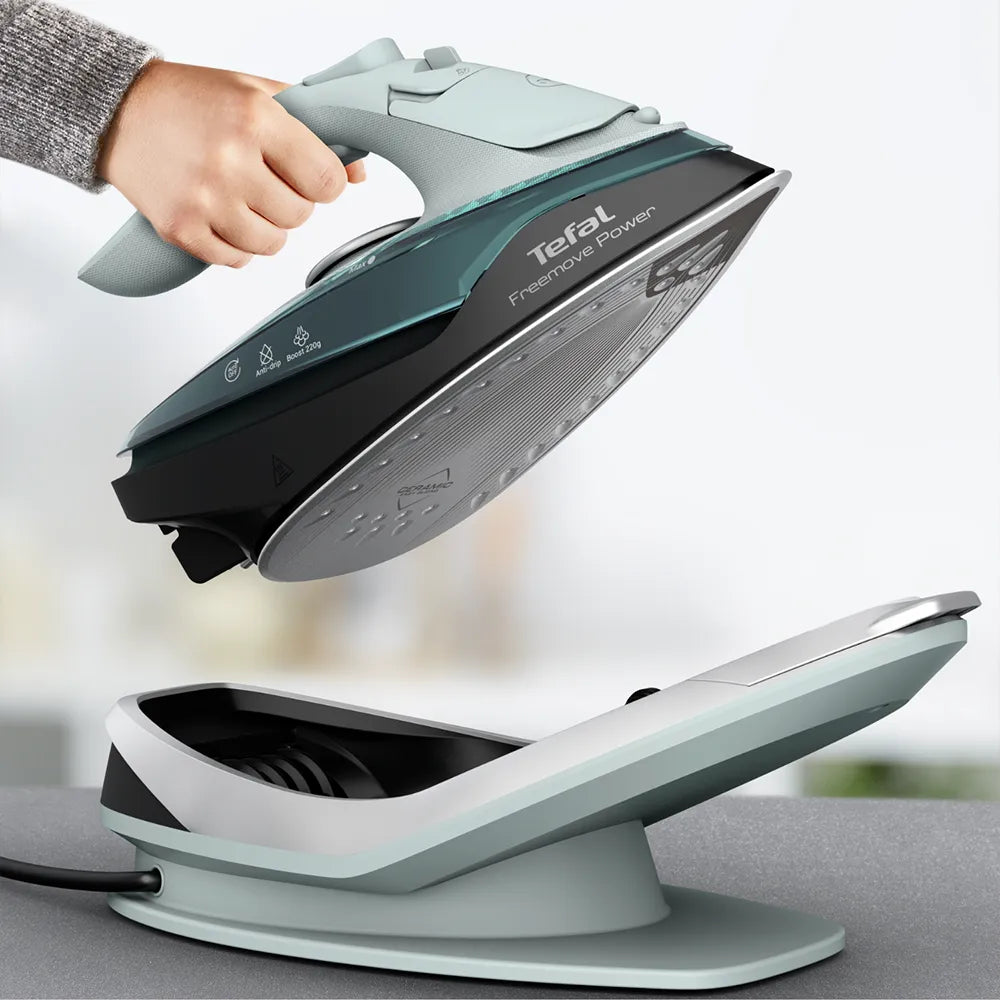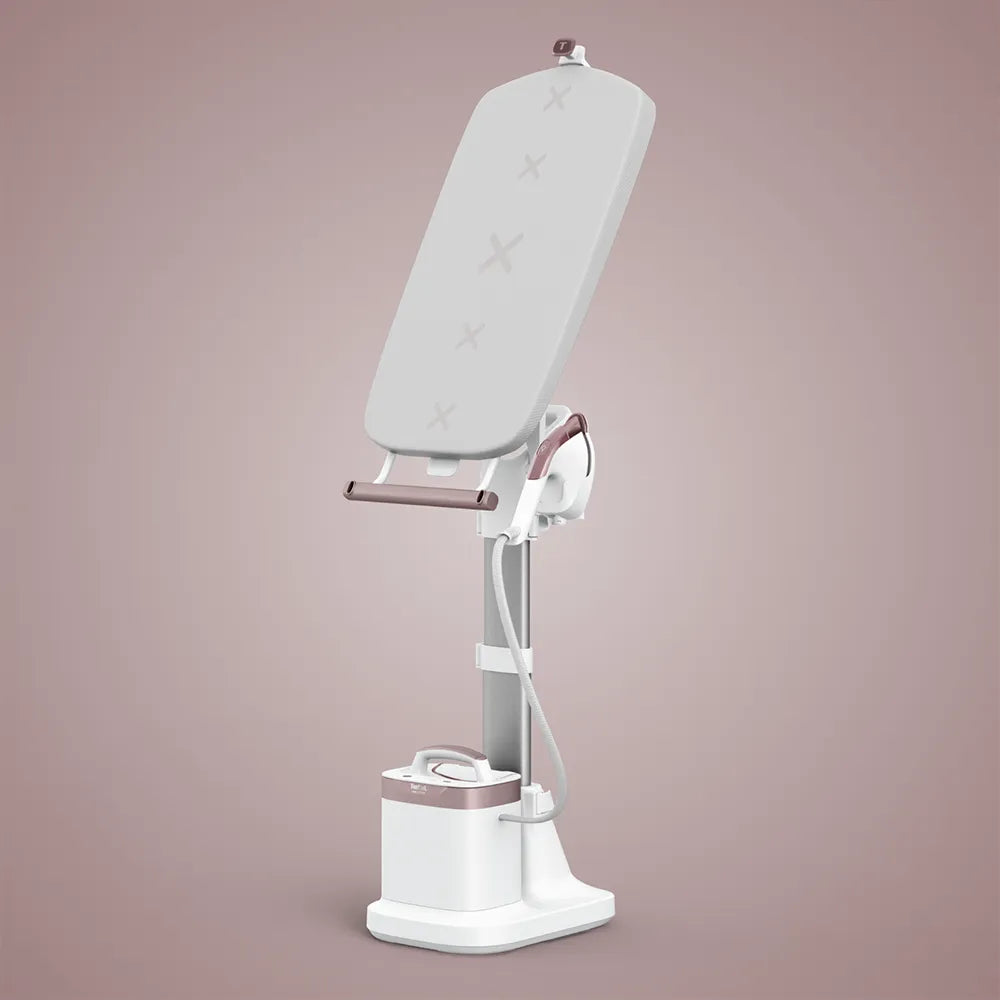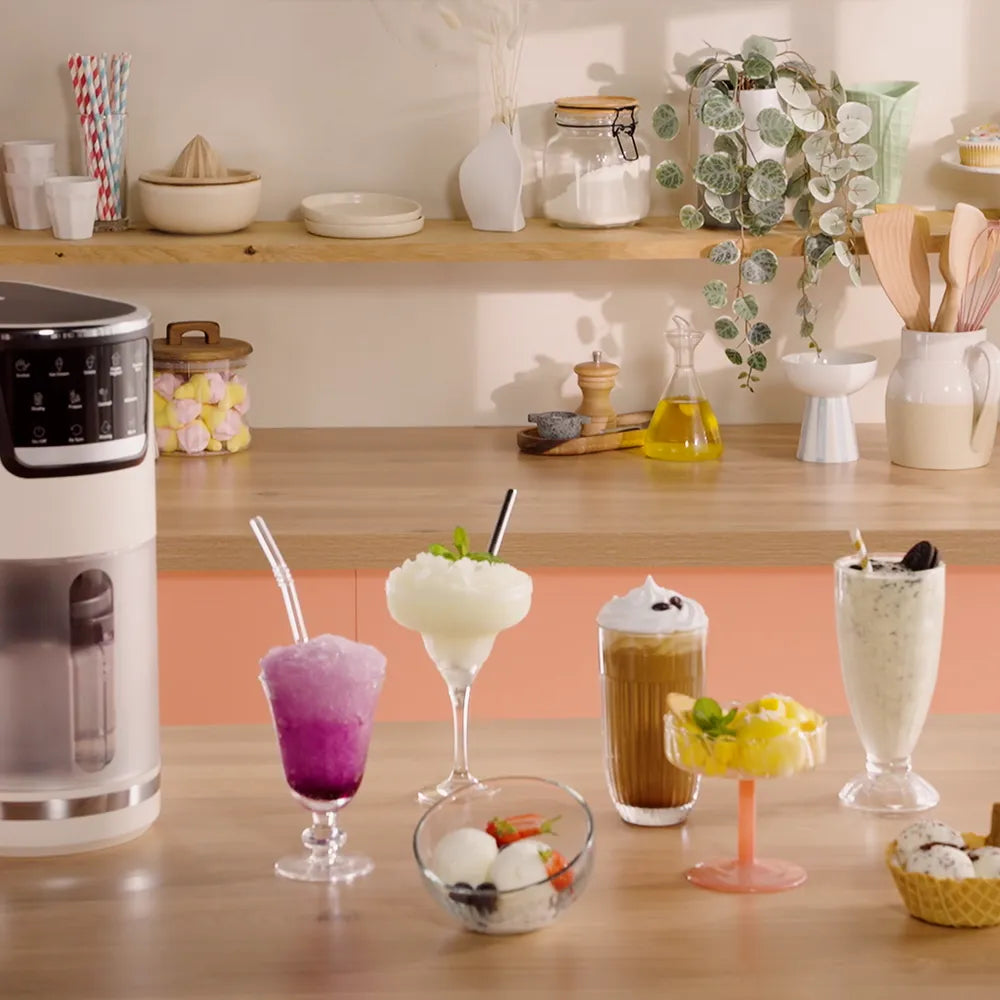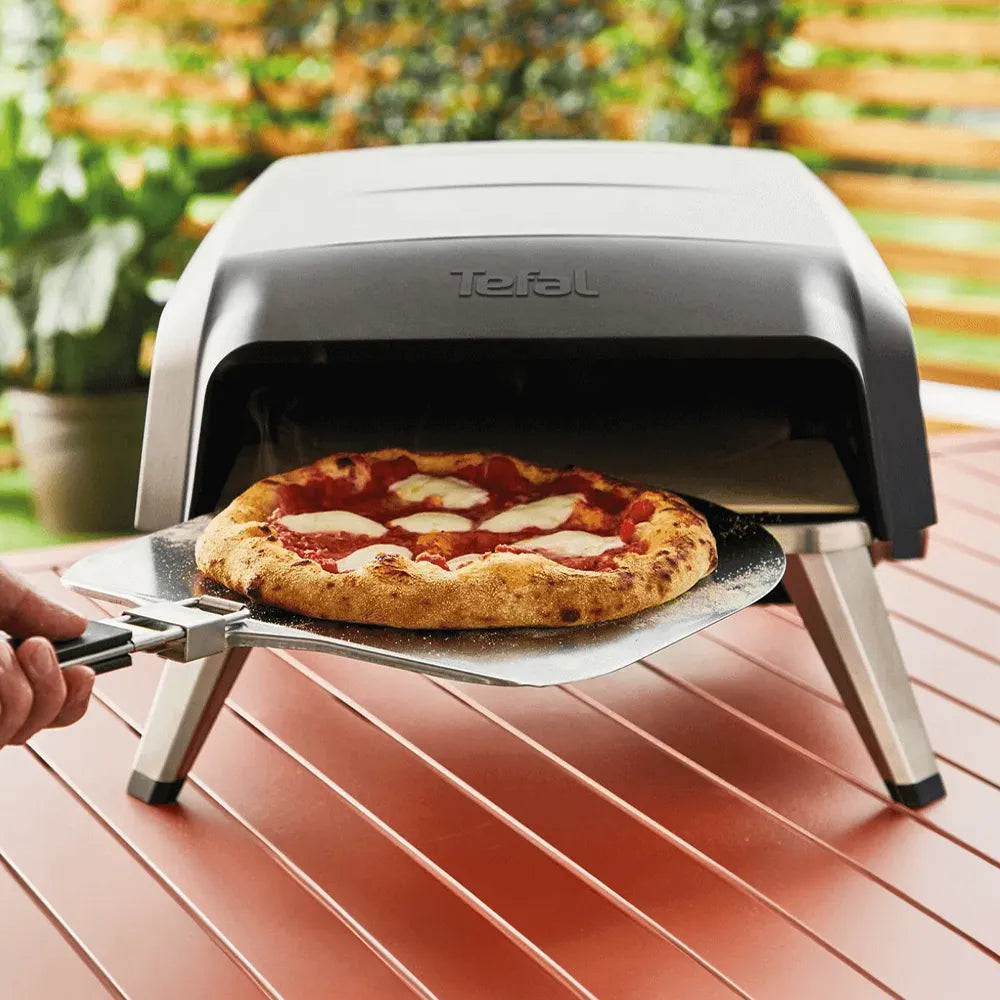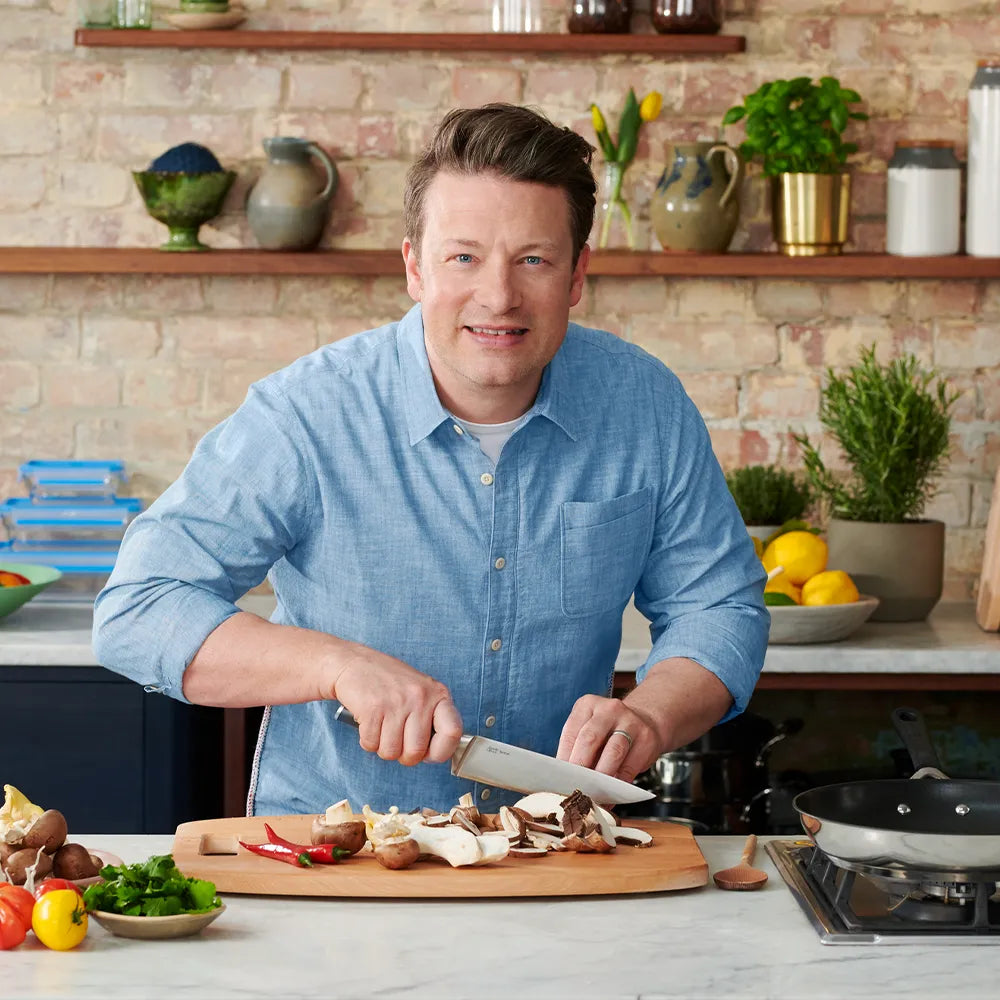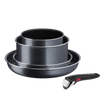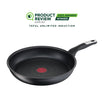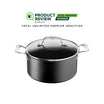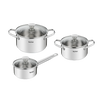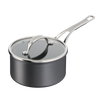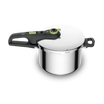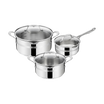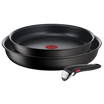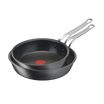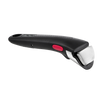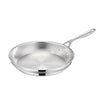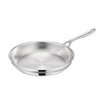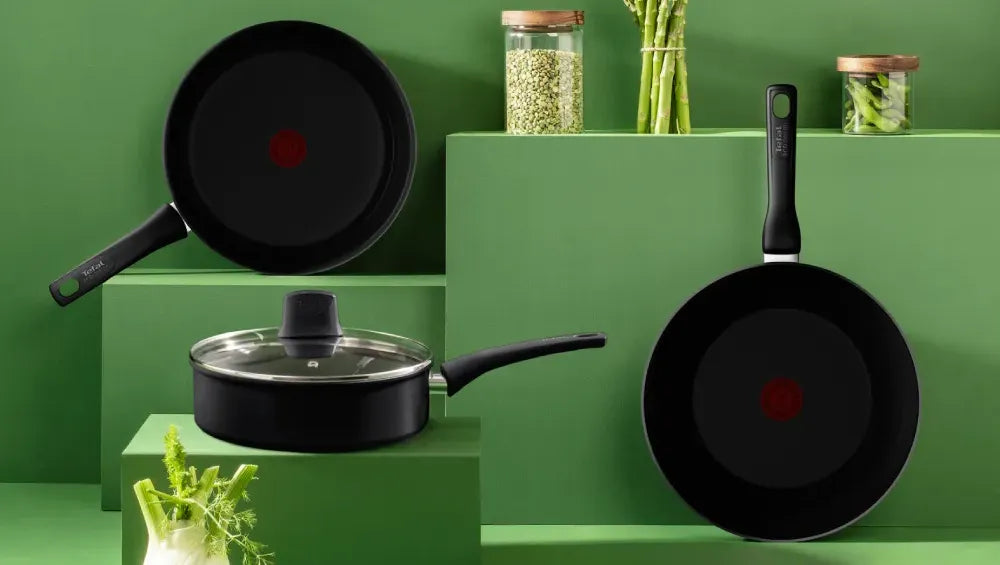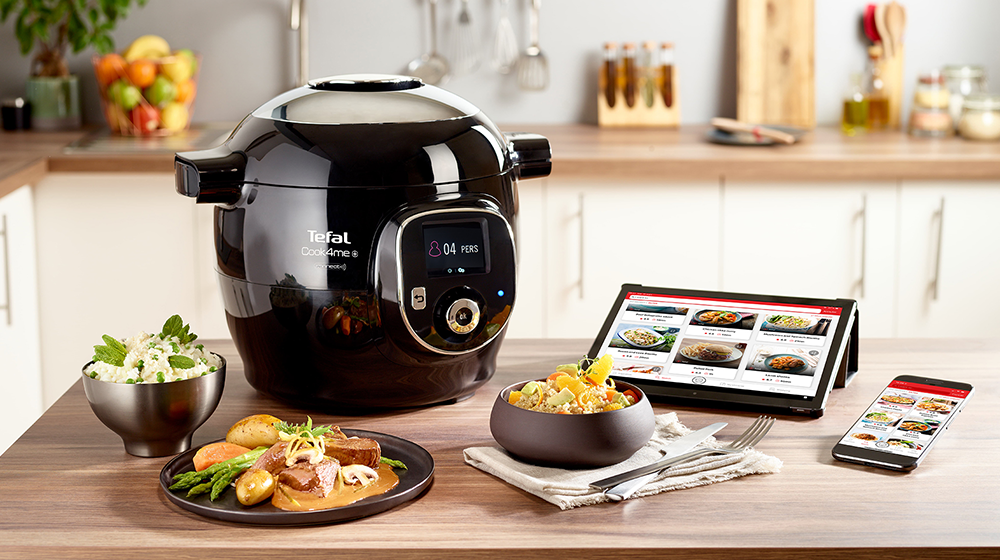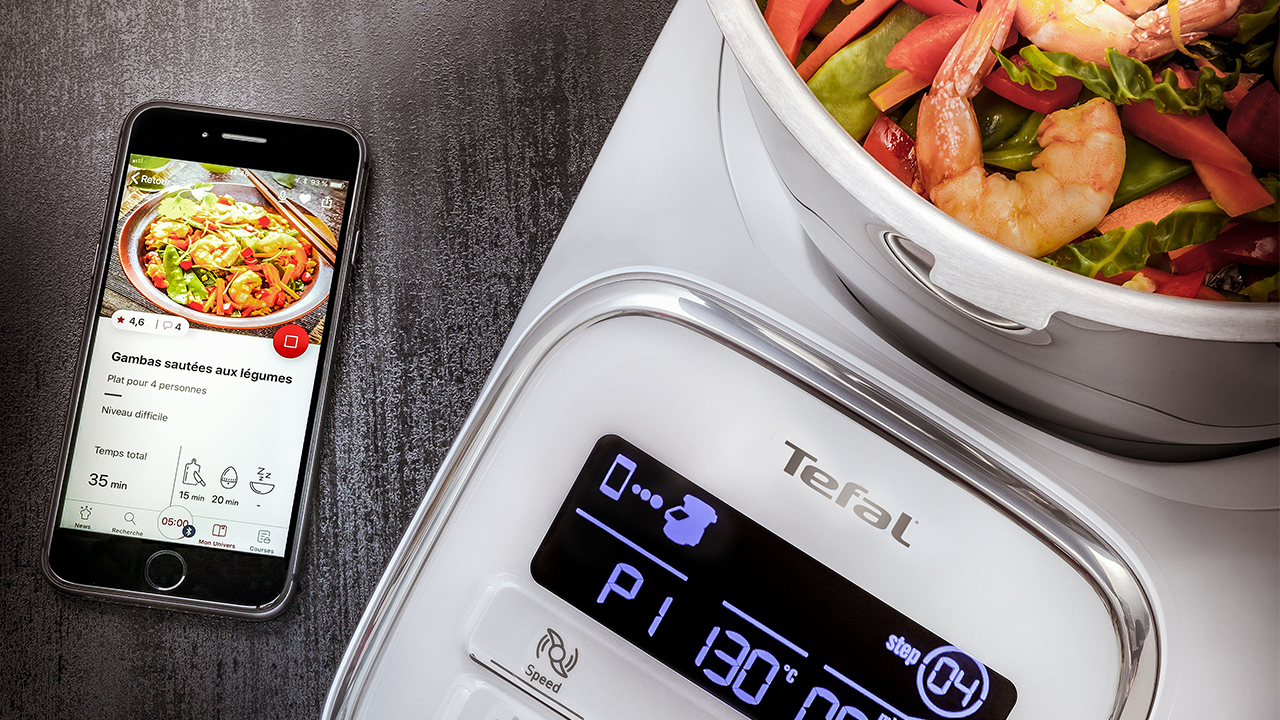General cookware use and care recommendations
Before first use:
- Wash the frying pan in hot water and washing-up liquid to remove any dust. Dry it and rub a little cooking oil into the non-stick coating before using for the first time. Remove any excess oil.
- Wash and dry your kitchenware after each use.
Use plastic or wood utensils
With some ranges, you can use certain metal utensils with the exception of knives and whisks (Refer to the recommendations for use indicated on the packaging or in the instructions included with the product). However, care should be exercised when using any metal utensil. Avoid using sharp edged utensils and avoid cutting directly in the pan. Do not stab or gouge the non-stick surface.
Avoid cutting directly in the pans
Do not gouge the non-stick surface. Slight surface marks or abrasions are normal and will not affect the performance of the cookware.
During and after cooking:
- Do not let pans boil dry and do not leave empty pans on a heated burner.
- Avoid overheating your empty pan
- Never heat fat or oil to the extent that it burns and turns black
- Never put cold water directly into a hot pan. Sudden changes in temperature may cause metal to warp, resulting in an uneven base.
- For stainless steel pans, add salt to water only after it has come to the boil (to avoid salt grains damaging the stainless steel).
- Always select the proper electric burner size or adjust the gas burner so the flame only touches the bottom of the pan and does not climb up the sides.
- Never leave pans unattended while cooking.
- Let pans cool before cleaning.
Tips on how to make the most out of my cookware
For non-stick coated pans:
- Avoid overheating your empty pan
- Never heat fat or oil to the extent that it burns and turns black
- Do not use knives and whisks. Slight surface marks or abrasions are normal and will not affect the performance of the non-stick coating
- Never put cold water directly into a hot pan. Sudden changes of temperature may cause metal to warp, resulting in an uneven base.
For ceramic coated pans:
- Highly resistant to heat and scratches, ceramic coatings are perfect for searing and crisping with a drop of oil
- Only for frypans, stir fry pans, sauté pans and shallow pans: most metal utensils may be used, except knives and whisks. Avoid using sharp-edged utensils. Slight surface marks or abrasions are normal and will not affect the performance of the coating.
For stainless steel pans:
- the thermal properties of the stainless steel allow the food to be seared and caramelised optimally,
- most metal utensils may be used, except knives and whisks. Avoid using sharp-edged utensils. Slight surface marks or abrasions are normal and will not affect the performance of the coating,
- for stainless steel pans, add salt to water only after it has come to the boil (to avoid salt grains damaging the stainless steel).
What is the best way to clean my pots and pans?
To prolong the life of your pan, we recommend hand washing.
We recommend not to put your pots and pans in the dishwasher since washing detergents (especially tablets) contain very aggressive and corrosive ingredients for aluminum parts.
For interior and exterior coated pans:
Clean the inner and outer coatings of your pan with hot water, washing up liquid and a sponge, (scouring powder and scouring pads are not suitable for use for cleaning pans).
Non-stick pan:
Cleaning by hand in soapy water is enough. The pan must be cleaned each time it's used to remove the film of grease that can stay on the surface. If the pan is only wiped with a paper towel or rinsed in water, the film won't be fully removed and may cook the next time you use the pan: stains may appear.
Non-stick pans must not be cleaned with scouring powders or scouring pads. A nylon sponge is ideal for both the interior and exterior of the pan.
For enamel pans:
Clean the enamel outside of the pans regularly; abrasive pads can be used. In the dishwasher, the outer coating may become dulled and discoloured due to the action of certain detergents. Our guarantee does not cover this type of wear.
For stainless steel pans:
Clean pans thoroughly with a special cleaning agent for stainless steel equipment. A blue or yellow discoloration may appear on your products. This is a natural occurrence with stainless steel, due to overheating and is in no way harmful. If you burn food in pans, which have a stainless steel interior, fill them with warm water and leave to soak for about an hour. Afterwards, wash them with washing up liquid and a sponge.
For ceramic pans:
We recommend to wash the ceramic pan manually, with water and a mild detergent. In this way, it's the most effective.
If the pan might not be clean enough during the normal dishes, you could add a splash of vinegar and water into the pan and heat it. The water / vinegar mixture will clean cook the pan. After this, rinse the pan well, dry and rub with a little bit of sunflower oil for example. And your pan will be as new.
If the base is stubborn dirt, you can wet the pan soak first with hot water and a good degreasing dishwashing detergent. Next, if necessary, you can clean the pan with a plastic scouring pad and some liquid abrasive cleaning detergent.
For hard anodised pan:
To prolong the life of your pan, we recommend hand washing with a non-abrasive sponge.
An exterior coating protects your cookware from the harmful consequences of dishwashing. It is therefore extremely important not to damage this coating and we recommend that you avoid the use of scouring pads (Scotch Brite).
In case of dishwasher use, it is preferable to use gentle detergents such as a liquid or gel.
Moreover, a too intensive use of the dishwasher is not recommended.
Washing by hand without scouring pads extends the life time of your cookware.
What should you do when food begins to stick?
For non-stick cookware:
Non-stick cookware are specially designed so that food does not stick. However, the frying pan or saucepan has to be properly maintained. For that purpose, please observe the following tips:
- Slightly oil the frying pan/saucepan before first use and then wash and dry it, repeat the process from time to time if you wash the frying pan/saucepan regularly in the dishwasher.
- It is also necessary to avoid overheating and scratches, in particular due to use of metal accessories (spatulas, ladles) and/or due to cleaning with a scouring sponge.
For ceramic coated cookware:
The non-stick properties of the ceramic coating are a lot more limited, both in terms of performance and duration, than those of the classic (PTFE) coating. We recommend cooking with more fat as well as washing more vigorously with slightly more washing-up liquid. For baked-on food, we recommend leaving your cookware to soak in soapy water, possibly with a little white vinegar.
Over time, the ceramic base will become stained without it being possible to remove the marks. This will not impair the performance of the kitchenware in any way and does not present any danger for health.
The non-stick coating in my frying pan is now sticking - why?
A build up of food deposits/residue may have formed on the pan which may originally be the result of an item of food being allowed to overcook in the pan. This can normally be cleaned by filling the pan with water and washing up liquid and leaving overnight. Then use a paste made up of bicarbonate of soda and water rubbed gently over the pan with a non-abrasive sponge (a non-stick scouring sponge). The non-stick coating should then be reconditioned with a little cooking oil wiped over the surface with a paper kitchen towel.
The frying pan may have been overheated causing damage and discolouration to the non-stick coating. When pans are regularly overheated this will lead to a weakening of the non-stick coating. The red Thermo-Spot in frypans is a heat indicator and tells you when the pan has reached the perfect cooking temperature. When the spot turns solid red reduce the heat to maintain the temperature. Do not continue to heat the pan on a high heat as this will result in the pan and the non-stick surface becoming overheated.
If cleaned in a dishwasher, after each use re-coat the non-stick interior with cooking oil to prevent the non-stick from drying out and ensure the best non-stick performance.
What type of utensils should I use on my cookware? Can I use metal utensils?
Depending on the range (check the packaging), most metal utensils can be used except knives, forks and whisks. However, care should be exercised when using any metal utensil. Avoid using sharp edged utensils and avoid cutting directly in the pan. Do not stab or gouge the non-stick surface.
You should refer to the recommendations for use indicated on the packaging or in the instructions included with the product. With some ranges, you can use certain metal utensils with the exception of knives and whisks. However, to extend the life of your frying pans and saucepans, we strongly recommend that you do not use metal. Choose plastic or wood.
Is non-stick cookware oven proof?
Refer to the product description or packaging of your cookware. Generally, the Jamie Oliver by Tefal range and the Ingenio range can go into the oven (ensure that the detachable handle is removed). Utensils should never be used in a microwave or convection oven.
Can I cook at high temperatures with my non-stick cookware?
No. Cooking at high temperature does not result in a significant decrease in cooking time and certainly does not contribute to the quality of the food, so cooking at medium temperatures is highly recommended. Another reason for this recommendation is that high temperature cooking might damage the non-stick coating.
Can I cook in my non-stick cookware without oil?
To extend the life of the coating, you should use a small amount of oil when stir-frying or grilling. You do not need oil when boiling or stewing.
Why did my pan change shape?
A pan warps under thermal shock (an overheated empty pan, a hot pan in contact with cold water or placed on a cold surface, etc.).
Before cleaning the pan, let it cool to room temperature.
A warped pan will give poor cooking results.
Ingenio Cookware
Safety notice to be observed
- Remove the handle during cooking and do not expose the handle to flames.
- Do not put the handle in the dishwasher.
- Do not put Ingenio containers in the microwave.
- Make sure to remove the handle and lids before placing the device in the oven.
- If your handle or utensil is damaged, it should no longer be used.
- Never disassemble the handle but return it to Tefal customer service.
- Never press the unlocking buttons during use.
- Never use the handle with utensils made by other manufacturers or utensils with a welded fixed handle.
- Keep the handle out of the reach of children.
- Do not carry anything over 10 kg.
Ingenio cookware cannot be used in microwave ovens.
Take off the handle before placing your utensil in the oven. Remove the handle and the lid after you have placed the pan in the oven.
I have an Ingenio Cookware Set. What are some tips on having a long-lasting Ingenio handle?
- It is recommended to remove the handle during cooking when it is not required to prevent it from overheating and ensure its durability.
- Do not expose handle to flames and do not put the handle in the dishwasher.
- Make sure to remove the handle (and lids) once you have placed your Ingenio cookware in the oven. Do not use the handle to carry anything over 10kg.
- Overheating the handle can damage or break it. The handle may therefore no longer function correctly and there is the risk that the pan could fall and you could burn yourself. If you notice any heat damage to the handle it is advised that you do not use it and you should replace it with a new one.
- If your pan becomes misshapen after a knock or a fall, it should no longer be used and we recommend that you replace it with a new one. If you continue to use the pan ensure that you can still fit the handle securely on the pan and be aware that you will be using the pan at your own risk.

